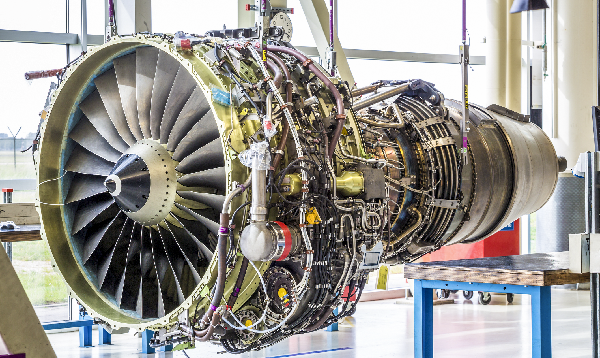What role do aerospace thermocouples play in ensuring the performance of jet engines? In aerospace engineering, precision is crucial, and aerospace thermocouples are key to achieving this precision. These sensors measure temperature and help ensure jet engines operate efficiently and safely. A thermocouple converts thermal energy into electrical energy, providing critical temperature data in jet engines, where temperatures can reach extreme levels. This accuracy is vital for performance and safety.
Aerospace thermocouples withstand harsh jet engine environments, facing high temperatures, vibrations, and corrosive elements. By delivering real-time temperature data, they enable engineers to monitor engine performance and make informed decisions about maintenance and operation. This article explores the science behind aerospace thermocouples, their types, their role in performance optimization, and the challenges they face in extreme conditions.
How Aerospace Thermocouples Function: The Science Behind Temperature Measurement
The Basics of Thermocouple Operation
Thermocouples operate based on the Seebeck effect. This effect occurs when two different metals join at one end, forming a junction. When the junction experiences a temperature change, it generates a voltage linked to that temperature difference. This voltage is measured and converted into a temperature reading.
Materials like Chromel (Nickel-Chromium alloy) and Alumel (Nickel-Aluminum alloy) are commonly used in aerospace thermocouple. Their ability to withstand high temperatures and maintain stability under varying conditions makes them ideal for jet engines.
The Importance of Calibration
Calibration ensures accurate readings from thermocouples. Each type has a specific calibration curve that connects the generated voltage to temperature. Aerospace engineers regularly calibrate thermocouples to maintain accuracy, especially in demanding jet engine environments.
Real-Time Data Collection
Aerospace thermocouples continuously provide temperature data to the engine control unit (ECU). This real-time data collection is critical for monitoring engine performance. By analyzing temperature trends, engineers can identify anomalies that may signal potential issues, enabling proactive maintenance and enhancing safety.
Types of Aerospace Thermocouple Used in Jet Engine Applications
Common Thermocouple in Jet Engine Types
Several thermocouple types are utilized in aerospace applications, each with unique advantages. The most common types include:
Thermocouple Type Composition Temperature Range Common Use Type K Chromel and Alumel -200°C to 1260°C General temperature monitoring in jet engines Type J Iron and Constantan Up to 750°C Found in auxiliary systems Type T Copper and Constantan Low-temperature environments Specific components in jet engines
Specialized Aerospace Thermocouples
Beyond standard types, thermocouple in jet engine is often customized for specific applications. These specialized thermocouples may feature protective sheaths made from advanced materials like Inconel or ceramic, enhancing their durability in extreme conditions. Recent advancements in materials science are pushing the boundaries of what these sensors can withstand, aligning with broader trends in aerospace engineering focusing on sustainability and efficiency.
Multi-Point Thermocouples
Modern jet engines increasingly use multi-point thermocouples. These devices have multiple sensing points along a single probe, allowing for comprehensive temperature mapping within the engine. This technology gives engineers valuable insights into temperature distribution, crucial for optimizing performance and fuel efficiency.
The Role of Accurate Temperature Data in Jet Engine Performance Optimization
Enhancing Engine Efficiency
Accurate temperature data from aerospace thermocouples is vital for optimizing jet engine performance. By monitoring temperatures throughout the engine, engineers can pinpoint areas for improvement. For instance, if certain components operate at higher temperatures than expected, it may signal inefficiencies in airflow or fuel combustion. As noted by aerospace engineer Mark Johnson, “The insights we gain from thermocouples are invaluable for fine-tuning engine performance.”
Preventing Overheating
Thermocouples play a critical role in preventing overheating. Excessive temperatures can lead to catastrophic engine failures. Real-time data allows for immediate adjustments, such as altering fuel flow or engine thrust, to mitigate overheating risks. This proactive approach is essential for maintaining safety standards in aviation.
Data-Driven Maintenance
The data collected by aerospace thermocouples informs maintenance schedules. By analyzing temperature trends over time, engineers can predict when components may need servicing or replacement. This predictive maintenance approach enhances reliability and reduces the risk of unexpected failures during flight.
Challenges and Solutions: Ensuring Reliability of Aerospace Thermocouples Under Extreme Conditions
Harsh Operating Environments
Jet engines operate in extreme conditions, with temperatures reaching up to 1,600°C and pressures exceeding 30 atmospheres. Under these conditions, thermocouples face challenges like thermal shock, vibration, and corrosion.
Thermal Shock and Its Impact
Thermal shock occurs when a thermocouple undergoes rapid temperature changes, potentially causing damage. To combat this, aerospace thermocouples often feature robust materials and protective coatings that enhance resilience. Advanced calibration techniques also help mitigate the impact of thermal shock.
Vibration Resistance
Jet engines experience significant vibrations during operation. Aerospace thermocouples are designed with vibration-dampening features, such as flexible mounting systems or specialized sheaths that absorb vibrations, maintaining measurement accuracy.
Corrosion Prevention
Corrosive environments, especially in older jet engines, threaten thermocouples. Manufacturers use high-grade materials resistant to oxidation and corrosion. Additionally, advanced protective coatings enhance durability, ensuring thermocouples continue to perform effectively.



































